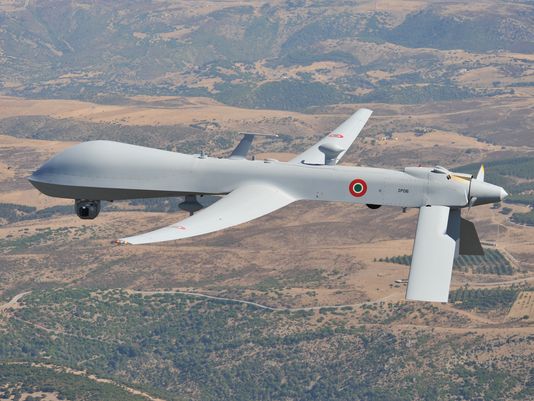When Mike Greenley, the vice president and general manager of CAE Canada, met with defence media prior to CANSEC in late May, he described a company goal of being “the training partner of choice,” rather than just a supplier of simulators and training systems.
At the Paris Air Show on Tuesday, the Montreal-based company continued to take strides in that direction, announcing a contract with the Italian Directorate for Air Armaments and Airworthiness (DAAA) to develop and enhance a mission training simulator already on order for the Predator Unmanned Aerial System.
With a growing demand for trained pilots and sensor crews to operate unmanned systems, the Italian Air Force is seeking to establish a centre of excellence for the Predator and other UAS, hoping to capitalize on a burgeoning European market for the specialized training. It’s an approach that fits CAE’s larger objective.
Together with the aircraft’s manufacturer, General Atomics Aeronautical Systems, CAE will develop a high fidelity UAS mission trainer specifically for Italy’s Predator(R) A and Predator B/MQ-9. CAE said it will conduct flight test data gathering on actual Italian Air Force Predator aircraft to ensure the highest fidelity simulation of flight systems and sensor payloads.
“Our Predator has proven to be capable of providing the Italian Air Force with an agile and flexible ISR capability, and we expect to increasingly use this platform for this kind of purpose,” said an official from the Italian Air Force. “We need highly-skilled and well-trained Predator crews to fully leverage its capabilities, and our new high-fidelity training system will enable us to use a safe and cost-effective virtual training environment to better prepare our Predator aircrews for operational missions. In addition, we plan to develop the Italian Air Force Centre of Excellence for unmanned systems, a first for training in the European region, and we will invite future users from allied Nations to jointly train at our facility.”
The high-fidelity Predator UAS Mission Trainer will be delivered in 2017 to Amendola Air Force Base.
Gene Colabatistto, president of CAE’s defence and security group, said the “simulation-based training continues to demonstrate its proven capability as a safe and cost-effective solution for maintaining and enhancing mission readiness” for both manned and unmanned systems.
Added Frank Pace, president of GA-ASI: “This simulator will help to reduce the training load on Italy’s Predator fleet significantly, freeing those aircraft for increased participation in civil and military operations worldwide.

